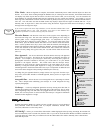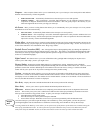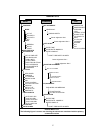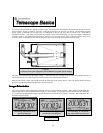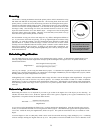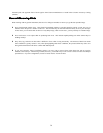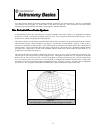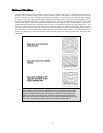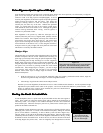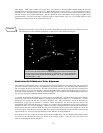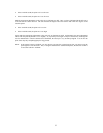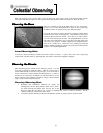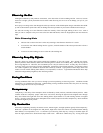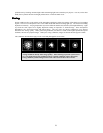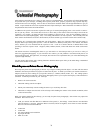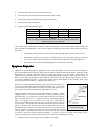
33
P
PP
P
P
PP
P
o
oo
o
o
oo
o
l
ll
l
l
ll
l
a
aa
a
a
aa
a
r
rr
r
r
rr
r
A
AA
A
A
AA
A
l
ll
l
l
ll
l
i
ii
i
i
ii
i
g
gg
g
g
gg
g
n
nn
n
n
nn
n
m
mm
m
m
mm
m
e
ee
e
e
ee
e
n
nn
n
n
nn
n
t
tt
t
t
tt
t
(
((
(
(
((
(
w
ww
w
w
ww
w
i
ii
i
i
ii
i
t
tt
t
t
tt
t
h
hh
h
h
hh
h
o
oo
o
o
oo
o
p
pp
p
p
pp
p
t
tt
t
t
tt
t
i
ii
i
i
ii
i
o
oo
o
o
oo
o
n
nn
n
n
nn
n
a
aa
a
a
aa
a
l
ll
l
l
ll
l
W
WW
W
W
WW
W
e
ee
e
e
ee
e
d
dd
d
d
dd
d
g
gg
g
g
gg
g
e
ee
e
e
ee
e
)
))
)
)
))
)
Even though the NexStar can precisely track a celestial object while in the Alt-Az position, it is still necessary to align the
polar axis of the telescope (the fork arm) to the Earth's axis of
rotation in order to do long exposure astrophotography. To do an
accurate polar alignment, the NexStar requires an optional equatorial
wedge between the telescope and the tripod. This allows the
telescope's tracking motors to rotate the telescope around the
celestial pole, the same way as the stars. Without the equatorial
wedge, you would notice the stars in the eyepiece would slowly
rotate around the center of the field of view. Although this gradual
rotation would go unnoticed when viewing with an eyepiece, it
would be very noticeable on film.
Polar alignment is the process by which the telescope's axis of
rotation (called the polar axis) is aligned (made parallel) with the
Earth's axis of rotation. Once aligned, a telescope with a clock drive
will track the stars as they move across the sky. The result is that
objects observed through the telescope appear stationary (i.e., they
will not drift out of the field of view). If not using the clock drive,
all objects in the sky (day or night) will slowly drift out of the field.
This motion is caused by the Earth's rotation.
Wedge Align
The NexStar has two equatorial wedge alignment modes (one for the
northern hemisphere and one for the southern) that will help you
polar align your telescope when using an optional equatorial wedge.
After performing either an EQ AutoAlign or Two-Star Alignment,
Wedge Align will slew the telescope to where Polaris should be. By
using the tripod and wedge to center Polaris in the eyepiece, the fork
arm (polar axis) will then be pointing towards the actual North
Celestial Pole. Once Wedge Align is complete, you must re-align
your telescope using either the EQ Two-Star or EQ AutoAlign
methods. Follow these steps to Wedge Align the NexStar in the
Northern Hemisphere:
1. With the telescope set up on an optional equatorial wedge and roughly positioned towards Polaris, align the
NexStar using either the EQ AutoAlign or Two-Star Alignment method.
2. Select Wedge Align from the Utilities menu and press Enter.
Based on your current alignment, the NexStar will slew to where it thinks Polaris should be. Use the tripod and wedge
adjustments to place Polaris in the center of the eyepiece. Do not use the direction buttons to position Polaris. Once
Polaris is centered in the eyepiece press ENTER; the polar axis should then be
pointed towards the North Celestial Pole.
F
FF
F
F
FF
F
i
ii
i
i
ii
i
n
nn
n
n
nn
n
d
dd
d
d
dd
d
i
ii
i
i
ii
i
n
nn
n
n
nn
n
g
gg
g
g
gg
g
t
tt
t
t
tt
t
h
hh
h
h
hh
h
e
ee
e
e
ee
e
N
NN
N
N
NN
N
o
oo
o
o
oo
o
r
rr
r
r
rr
r
t
tt
t
t
tt
t
h
hh
h
h
hh
h
C
CC
C
C
CC
C
e
ee
e
e
ee
e
l
ll
l
l
ll
l
e
ee
e
e
ee
e
s
ss
s
s
ss
s
t
tt
t
t
tt
t
i
ii
i
i
ii
i
a
aa
a
a
aa
a
l
ll
l
l
ll
l
P
PP
P
P
PP
P
o
oo
o
o
oo
o
l
ll
l
l
ll
l
e
ee
e
e
ee
e
In each hemisphere, there is a point in the sky around which all the other stars appear to
rotate. These points are called the celestial poles and are named for the hemisphere in
which they reside. For example, in the northern hemisphere all stars move around the
north celestial pole. When the telescope's polar axis is pointed at the celestial pole, it is
parallel to the Earth's rotational axis.
Many methods of polar alignment require that you know how to find the celestial pole by
identifying stars in the area. For those in the northern hemisphere, finding the celestial
pole is not too difficult. Fortunately, we have a naked eye star less than a degree away.
This star, Polaris, is the end star in the handle of the Little Dipper. Since the Little Dipper
(technically called Ursa Minor) is not one of the brightest constellations in the sky, it may
be difficult to locate from urban areas. If this is the case, use the two end stars in the bowl
of the Big Dipper (the pointer stars). Draw an imaginary line through them toward the
Figure 6-5
The position of the Big
Dipper changes throughout
the year and the night.
Figure 6-3
This is how the telescope is to be set up for polar
alignment. The tube should be parallel to the
fork arm and the mount should point to Polaris.



